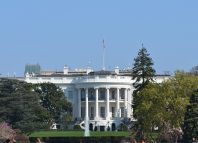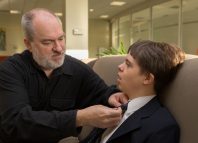Workforce Crisis
DSP Recruitment and Retention Tips from Blitz
Wolf: Moving Pa. Forward With a Balanced Budget and Smart Investments in What Matters Most
PA Mom Calls on Government to Address ID/A Support Crisis
RCPA Workforce Survey Analysis Report
OLTL Payments to Strengthen Workforce & Assist Adult Day Services Providers
The Office of Long-Term Living (OLTL) has outlined its plan to the Centers for Medicare and Medicaid Services (CMS) to strengthen the workforce and assist Adult Day Services (ADS) providers. This plan is in response to the American Rescue Plan Act of 2021 (ARPA), which provides a temporary 10 percent increase to the federal medical assistance percentage (FMAP) for certain Medicaid expenditures for home and community-based services (HCBS). The funding must be used to enhance, expand, or strengthen HCBS.
The OLTL ARPA plan directs $46.5 million to Personal Assistance Service (PAS), Community Integration (CI), and Residential Habilitation (Res Hab) providers to assist with recruitment and retention of direct care workers. The plan directs an additional $13 million to ADS providers to strengthen ADS. To qualify for these payments, providers must have been in operation as of November 1, 2021.
OLTL sent letters to providers with details about the payments, including information about the approved use of and reporting on these funds. For reference, samples of the letters, a list of qualifying entities and payment amounts, and a blank copy of the Provider Attestation Form are available on the DHS Long-Term Care Providers page under the heading “American Rescue Plan Act (ARPA) Funding.”
To receive a Strengthening the Workforce or Adult Day Services payment, providers must complete the OLTL Provider Attestation form and return via email or fax it to the OLTL Bureau of Finance at (717) 787-2145. Providers who return completed forms by January 7, 2022, will receive payment in February 2022.
Strengthening the Workforce Payments
- The total available for a one-time payment to PAS, Res Hab, and CI providers is $46,500,000. Of that, $44 million is allocated to PAS and CI, and $2.5 million is allocated to Res Hab. Amounts allocated to providers in each category were based on fee-for-service claims and managed care encounters for services provided between July 1, 2020, and March 30, 2021.
- To calculate each PAS and CI provider’s Strengthening the Workforce payment, OLTL first divided the $44 million allocation by the total number of fee-for-service and managed care PAS and CI units billed between July 1, 2020, and March 30, 2021, to determine a per unit amount. Each provider’s payment was then calculated by multiplying the per unit amount by the provider’s number of fee-for-service and managed care PAS and CI units billed during the same period.
- To calculate each Res Hab provider’s Strengthening the Workforce payment, OLTL first divided the $2.5 million allocation by the total number of fee-for-service and managed care Res Hab units billed between July 1, 2020, and March 30, 2021, to determine a per unit amount. Each provider’s payment was then calculated by multiplying the per unit amount by the provider’s number of fee-for-service and managed care Res Hab units billed during the same period.
Strengthening ADS Payments
- The total funds available for a one-time payment to ADS providers is $13 million. Amounts allocated to ADS providers were based on fee-for-service claims and managed care encounters for services provided between January 1, 2019, and December 31, 2019.
- To calculate each ADS provider’s Strengthening Adult Day Services payment, OLTL first divided the $13 million allocation by the total number of fee-for-service and managed care ADS units billed between January 1, 2019, and December 31, 2019, to determine a per unit amount. Each provider’s payment was then calculated by multiplying the per unit amount by the provider’s number of fee-for-service and managed care ADS units billed during the same period.
Acceptable Uses of ARPA Funding
ARPA funding must be used for things such as sign on bonuses, retention payments, COVID-19 related leave benefits and paid time off, vaccination incentives, or the purchase of personal protective equipment and testing supplies. Additionally, ADS providers can use the funding for retrofitting adult day centers, expenses to re-open the centers, and expenses to develop alternative models to provide ADS.
Questions about this information should be directed to the OLTL Provider Helpline at 800-932-0939.
RCPA Workforce Survey Executive Summary
RCPA Member Gaudenzia: Alcohol, Stimulants Abuse Rising Locally, Opioids Remain Prevalent
Overview of ODP’s American Rescue Plan Act (ARPA) Funding Plan
Deputy Secretary Ahrens presented an overview of the Office of Developmental Programs’ (ODP) plan that was conditionally approved by the Centers of Medicare and Medicaid Services (CMS) for use of the ARPA funds during a webinar on December 9, 2021. While the infusion of funds will be beneficial to the system of support in PA, RCPA staff will be carefully monitoring the details of the plans as they are released, particularly the rate refresh, and will continue to advocate for fiscal policies that will allow for stability in the service system.
Highlights include:
- Funding to Address High Staff Vacancy and Turnover Rates
- One time funding for COVID-19 related staffing expenses, recruitment, and retention of Direct Support Professionals or Supports Coordinators to include funding for hazard pay, costs of recruitment efforts, sign-on bonuses, and other incentive payments that are:
- Provided as a supplemental payment under Appendix K; and
- Up to 5% of prior year revenue (2% for AWC) for related expenditures between April 1, 2021, and March 31, 2022.
- Estimated total funding: $200M.
- One time funding for COVID-19 related staffing expenses, recruitment, and retention of Direct Support Professionals or Supports Coordinators to include funding for hazard pay, costs of recruitment efforts, sign-on bonuses, and other incentive payments that are:
- Updating Fee Schedule Rates
- Proposed changes in fee schedule to be published in December for a 30-day public comment period and implemented in late January or early February 2022.
- Rate changes for waiver services will be retroactive to July 1, 2021, for the AAW and January 1, 2022, for the ID/A waivers.
- Proposed fee schedule includes increases in all regular fee schedule rates (exception — temporarily enhanced fee schedule rates for CPS and Transportation Trip).
- Estimated fiscal impact of the proposed rate changes for ODP programs is approximately $400M annually (proposed rate updates are still in the final stages of review, so this number may change).
- Funding for Staff Training, Credentialing, and Business Associates Programs for Employment
- One time funding up to $50,000 or 1% of provider annual revenue, whichever is greater.
- Estimated total funding $23M.
- Respite and Family Support Funds for Individuals on the Waiting List for ID/A
- Funding available for one-time family support grants for individuals and families on the ODP waiting list for purchase of respite and other eligible family support service.
- Estimated funding: $12M.
- Funding for Technology That Enhances HCBS Provision
- One-time funding for providers to support activities, including the purchase of assistive and/or remote support technology, the purchase and implementation of new software/technology for electronic health records, quality, or risk management functions, and the purchase of technology for professional credentialing identified in ODP provider qualifications.
- One-time funding for the purchase of technology for Supports Coordination Organizations to improve capacity to conduct remote monitoring of individuals, to improve efficiency of Supports Coordinators, including maximizing time in the field, to obtain or enhance secure inter-office communications, or to implement technology-dependent quality improvement strategies.
- Estimated funding: $13.5M.
- Technology Accelerator Resources : Initiative is Shared With OLTL
- Contractor to work with ODP and stakeholders to accelerate adoption of technology through consultation, information dissemination, and training to agencies seeking to adopt remote supports and other technology solutions to support individuals receiving HCBS.
- This includes funding for two statewide technology summits.
- Training and materials developed will be available electronically and through ODP’s learning management system to provide access after the funding period.
- Additional Staff to Support Intake, Eligibility of New Populations, Waiver Capacity, and Risk Management
- Funding will be available for approximately 80 additional county staff for the following.
- Estimated funding: $25M.
- Incident Detection and Incident Reporting Fidelity System
- Purchase development and implementation of dashboards/software pairing claims data and incident reports to evaluate provider incident reporting fidelity and detect unreported incidents of abuse and neglect.
- Develop and Implement Selective Contracting
- Purchase time limited consultation to support the Department to develop and implement selective contracting and alternative payment methods for selected HCBS services for complex populations to improve quality of service provision. Systems improvement will provide for aligning payment with performance measures and outcomes.
- Training to Address Pandemic-Related Needs and Promote Initiatives
- Peer-to-peer training will be available for individuals and families.
- Training and materials developed will be available electronically and through ODP’s learning management system.
- Estimate funding: $4M.
- Purchase of Emergency Preparedness Kits to Non-Residential HCBS Participants
- Estimate funding: $520k.
- Provide Funding to Support Housing for Individuals Transitioning From Institutional or Congregate Settings
- One-time funding will be targeted to residential providers for housing adaptations and purchase for individuals transitioning from public or private ICF, children transitioning from congregate care, medically complex adults (when cost effective and to avoid placement in a nursing facility), and adults to age in place or transition to supported living or life sharing.
- Estimate funding: $15M.
- Transfers from Private Intermediate Care Facility to Community
- Additional Consolidated Waiver capacity for the transfer of 25 individuals from facility care to HCBS.
- Estimate funding: $5M.
Visit the DHS web page to view the full spending plan.















